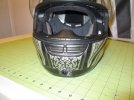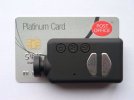as most DVR's have a lens with an angle of view of 120° a slower shutter speed should be OK, lets not mistake 60 FPS for an exposure of 1/60th, this is how I was told
That is true, and also most dashcams are not handheld, but mounted on your car springs with movement well damped by your suspension dampers (shock absorbers) so you can have much slower exposure times.
However we do use them for recording motion, often high speed motion, not static scenes and so the required exposure time is normally dependent on your speed far more than anything else.
It is important not to confuse fps for exposure time, they are completely unrelated. To get a sharp image of fast moving objects you need a short exposure time, the fps (frame rate) is irrelevant. A fast exposure requires either a high sensitivity sensor (ISO rating), a bright lens (eg f1.8) or good lighting, or preferably all three.
A high fps will give a smoother video which remains reasonably smooth when viewed in slow motion.
A fast exposure will give less motion blur.
A high resolution will give sharper images but only if there is no motion blur and the camera has a lens to match the sensor resolution.
The definition of 4K given above is wrong, however there seem to be many definitions depending on what the manufacturers are trying to sell, it's a bit like 720p video being described as HD.
720p HD can be described as 1.2K
Standard HD can be described as 1.9K.
The mini 0806 can be described as 2.5K based on it's 1080 21:9 cinema mode.
To achieve true 4K from a dashcam will require a very good quality lens, certainly if you want it to remain sharp right into the corners of the image as the mini 0806 does.


